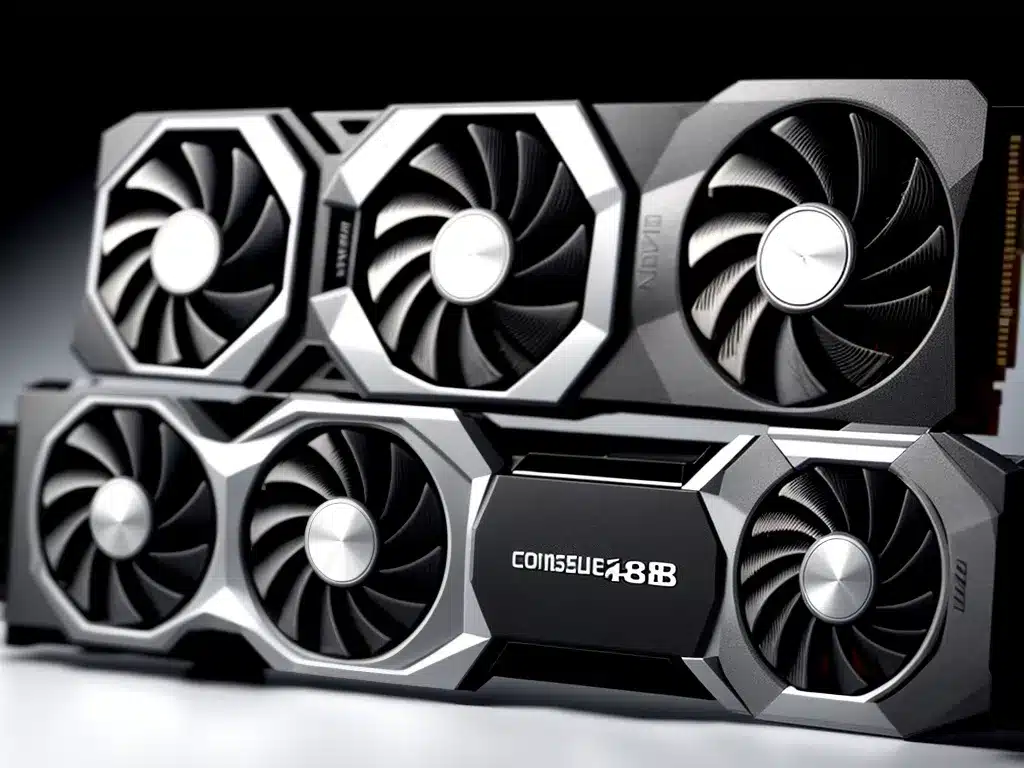
Introduction
8K resolution offers 4x the pixel density of 4K or 16x that of full HD 1080p. With sharper images and more detailed graphics, 8K gaming promises incredibly immersive experiences. However, 8K requires significant GPU horsepower to render smooth frame rates. I explore whether consumer graphics cards will be able to deliver playable 8K gaming within the next 5 years.
Current State of 8K Gaming GPUs
Top-End GPUs Struggle With 8K
Today’s top graphics cards like the Nvidia RTX 3090 Ti and AMD Radeon RX 6950 XT can only manage 30-60 FPS on modern titles at 8K with max settings. More intensive games see <30 FPS, which is unplayable.
To achieve smooth 60+ FPS 8K gaming, GPUs need 2-4x more performance. Even Nvidia’s $2000 RTX 3090 Ti cannot deliver a consistently good 8K experience today. More powerful GPUs are needed.
Bandwidth and VRAM Challenges
Rendering 8K requires heavy bandwidth to shuttle data between the GPU and memory. Current GPUs utilize PCIe Gen 4.0 (16 GB/s) which is inadequate. PCIe Gen 5.0 (32 GB/s) or faster is necessary.
In addition, 8K textures and assets require a large VRAM capacity. Most GPUs today only have 10-16GB, whereas upcoming titles may need 24GB+ VRAM for 8K. Memory capacity needs to increase.
Optimizations Help But Are Not Enough
Nvidia DLSS and AMD FSR help boost 8K frame rates through upscaling from lower resolutions. However, image quality suffers compared to native 8K rendering.
Game and engine optimizations will also help, but cannot completely overcome the massive hardware requirements of 8K on their own. More robust GPU advancements are still needed.
Feasibility of 8K Gaming GPUs Within 5 Years
Next-Gen GPU Architectures Will Bring Big Gains
Both Nvidia and AMD are working on major new GPU architectures to succeed Ampere and RDNA2 respectively. The expected 2-3x performance gains with these next-gen GPUs will be critical for achieving 8K 60 FPS.
Nvidia Lovelace and AMD RDNA3 releasing in 2023-2024 should bring GPUs capable of no-compromise 8K gaming for the first time.
PCIe 5.0 Support Will Provide Needed Bandwidth
Upcoming GPUs will support PCIe Gen 5.0 (32 GB/s) which doubles available bandwidth compared to PCIe Gen 4.0. This fulfills a critical 8K requirement.
Motherboards and processors rolling out over 2023-2024 will also have PCIe 5.0 readiness, allowing GPUs to finally utilize the extra bandwidth.
24GB+ VRAM Cards Expected on High-End Offerings
Nvidia’s rumored RTX 4090 Ti is expected to feature 48 GB VRAM to handle 8K texture demands. AMD’s flagship RDNA3 Navi 31 GPUs could also potentially offer 24GB+ VRAM configurations.
These VRAM capacities align with the memory needs of next-gen games at 8K resolution.
Architecture and Process Improvements Will Increase Efficiency
Next-gen GPUs will leverage improved manufacturing processes like TSMC 5nm/4nm for higher transistor densities and power efficiency.
New architectural designs will also reduce redundancies and boost utilization over existing GPUs. Together, these advancements will stretch performance gains even further.
Challenges and Unknowns Remain
Ray Tracing Could Offset Performance Gains
Nvidia and AMD’s new architectures promise big performance improvements, but portions of those gains could be consumed by the increasing use of demanding ray tracing effects in games. If ray tracing adoption grows rapidly, it could dampen the real-world 8K performance uplift.
Next-Gen Games Could be More Demanding
Upcoming game titles will push visual fidelity further with complex new graphics features. If these next-gen games end up significantly more demanding than today’s titles, they could outweigh the GPU hardware improvements in the coming years.
Real-World Performance Unknown
There are many unknown variables, including real-world clock speeds, architectural efficiency gains, and final VRAM capacities. We cannot precisely predict how these factors will affect real-world 8K gaming performance.
Conclusion
Within the 5 year timeframe, next-gen GPUs like Nvidia Lovelace and AMD RDNA3 promise architecture revamps, new manufacturing processes, PCIe 5.0, and increased VRAM capacity that collectively could enable playable 8K 60 FPS gaming.
However, variables like ray tracing adoption and next-gen game requirements raise questions. Overall, 8K gaming GPUs appear technically feasible but not guaranteed in the consumer space by 2027. Their arrival will ultimately depend on execution and technology maturation over the coming years.












